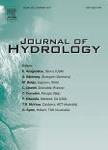版权所有:内蒙古大学图书馆 技术提供:维普资讯• 智图
内蒙古自治区呼和浩特市赛罕区大学西街235号 邮编: 010021

作者机构:Shahid Bahonar Univ Kerman Water Engn Dept Kerman Iran
出 版 物:《JOURNAL OF HYDROLOGY》 (水文学杂志)
年 卷 期:2019年第569卷
页 面:12-21页
核心收录:
学科分类:08[工学] 0708[理学-地球物理学] 081501[工学-水文学及水资源] 0815[工学-水利工程] 0814[工学-土木工程]
主 题:Free surface flow Sharp crested weirs Firefly algorithm Moth-flame optimization algorithm Taylor diagram
摘 要:Piano key weirs (PKWs) are acquired and developed for free surface control structures which improve their performance by increasing the storage capacity and flood evacuation. In this study, the potential combinations of two popular artificial intelligence data-driven models (Al-DDMs) of multi-layer perceptron neural network (MLPNN) and adaptive neuro-fuzzy inference system (ANFIS) with four meta-heuristic optimization algorithms (particle swarm optimization, genetic algorithm, firefly algorithm & moth-flame optimization) are assessed for predicting the PKW s flow rate. Comparing the outcomes of the ten standard and hybrid Al-DDMs with three empirical relations based on several statistics and diagnostic analysis (such as the Taylor diagram) for estimating the flow rate shows that the AI-DDMs can predict the passing flow more accurately. In addition, the particle swarm optimization and firefly algorithm meta-heuristic algorithms improve the performance of ANFIS and MLPNN, respectively. The Mann-Whitney test for investigating the differences between two independent applied models indicates a significant difference between the Al-DDMs and two of the empirical relations at the 95% confidence level.